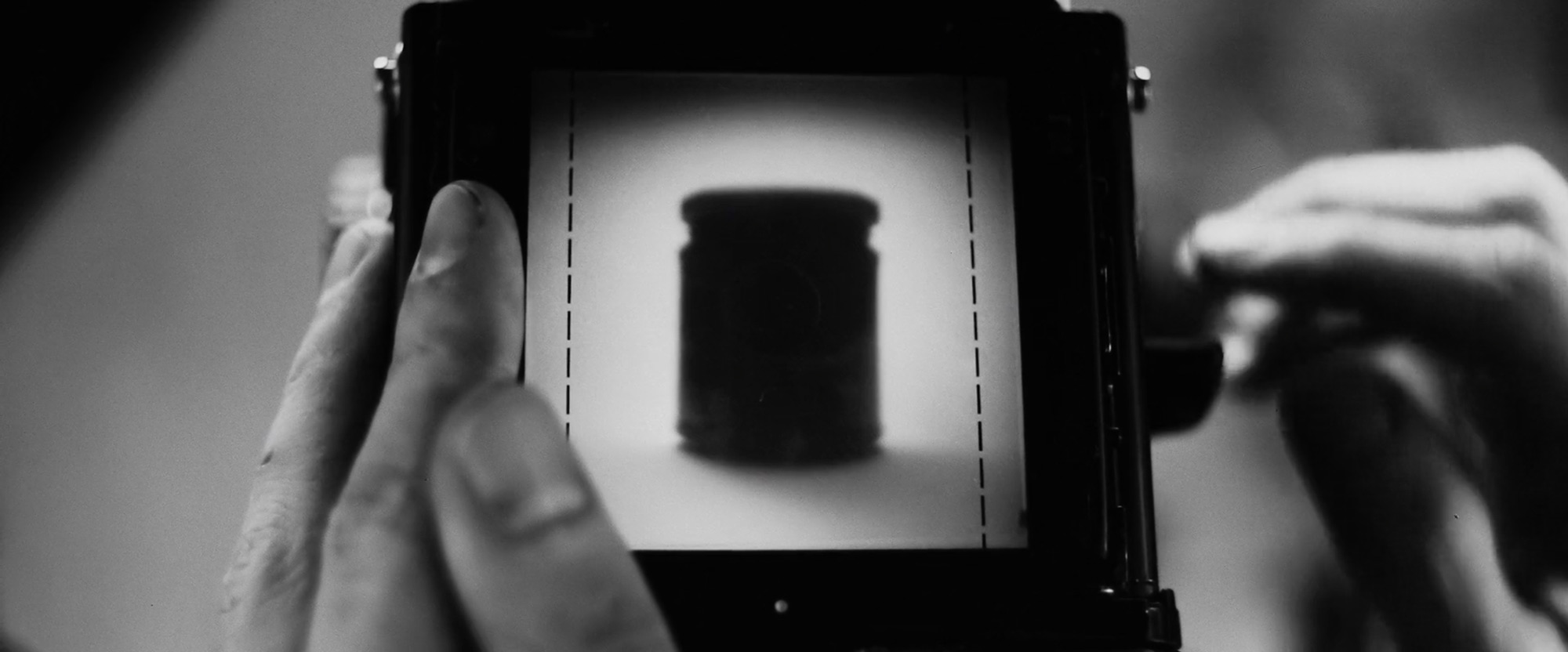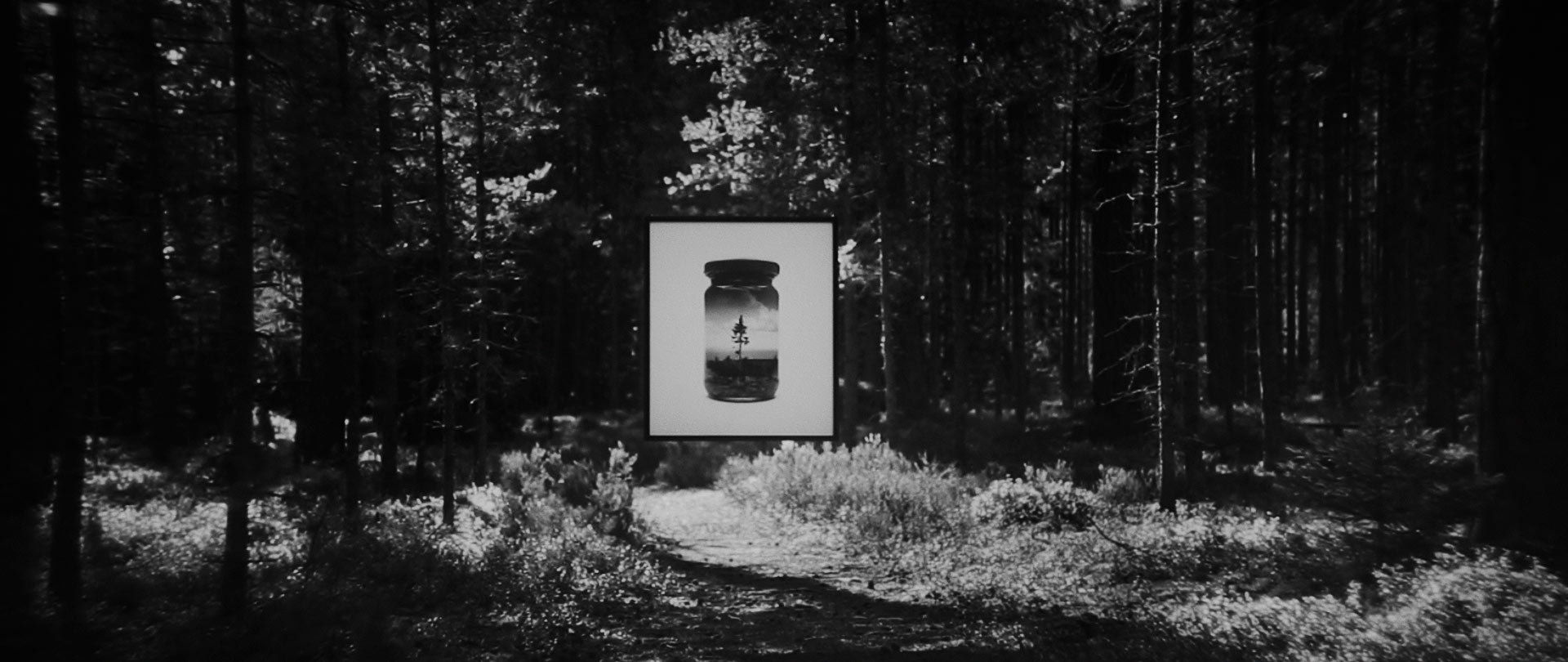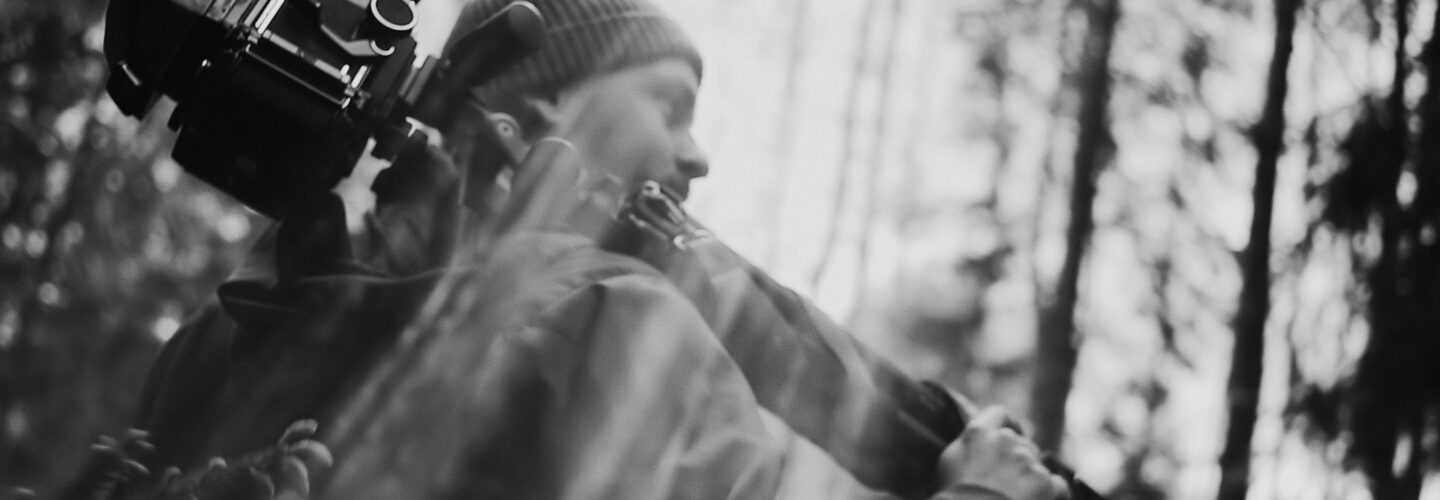
In his ongoing project Jarred & Displaced, Finnish photographer Christoffer Relander makes use of multiple exposures to literally ‘bottle’ the landscapes of his youth. Working within the black & white visual framework established by Relander, filmmaker Anders Lönnfeldt provides a poetic insight into the photographer’s working practice, in his behind the scenes short film of the same name. DN spoke to Anders about creating this lyrical introduction to Relander’s analogue manipulated photographs.
What prompted Christoffer Relander to reach out to you for this project despite your not having made a behind the scenes film before? How did you approach this new filmmaking challenge?
I had worked with Christoffer several times before. The first time was when I shot a TV-series about photographers, showing how different photographers work. Christoffer was one of these photographers. I think because of this it felt natural for him to ask me to do this behind the scenes video. Even though I hadn’t shot a behind the scenes video before I did not feel I had to prepare that much. I have shot a lot of documentary work during my career so far, so I felt I had it under control. I discussed the video with Christoffer a lot before we went out shooting. We also continued the discussion during the process of making the film, which formed the film in the way we wanted. My biggest fear with the film was that I wouldn’t succeed in giving the audience this slightly surrealistic feeling that it does. Even though I shot the film like a documentary I did not want to give the film too much of a documentary feeling.
Clearly when documenting a photographer the work of your subject exerts a strong visual influence. What elements of Jarred & Displaced’s stylistic choices were dictated by Christoffer’s photographic project?
From the first meeting Christoffer told me how he wanted to do the video. Since the photo project is done with real old school film in black & white, he also wanted the video to be in black & white. He was also clear that the contrast in the video needs to be right, so I put a lot of time in the grading process. Also the analog feel was really important to Christoffer. Since the photo project was done by an analog method, he wanted the video to give an analog feeling. During the process I did some scenes where I used too many digital effects and we ended up throwing these scenes in the trashcan even though they looked really good. But if it does not fit, why force it?

What were the considerations behind your choice of gear for this shoot?
In every new project I do I try to add some new gear or a new way to work with the gear. The simple reason is that when I work with something new I am more motivated. Canon had released the Canon 1DX Mark II camera a couple of months before the shoot started, so I contacted Canon and asked if I could try out the camera during this production. They thought the production sounded interesting and were glad to provide me with the camera for the shoot.
I was able to experiment a lot, which was essential for the final result of the video.
I connected my Atomos Shogun external recorder to the camera to be able to shoot in the Avid DNxHD codec. This way I got the footage in better quality and the editing process was smooth. The most helpful feature with the Atomos Shogun recorder was that I was able to add a black & white LUT to the recorder. This way I could see a high contrast black & white image in the monitor during the shoot. The image I saw in the monitor was quite close to the final image after the grade. We shot the whole video during a period of about 6 months. I think we shot the video for about 6 days during this period.

You’ve mentioned that post production was a lengthy process, full of experimentation. What was your working method during post?
I worked simultaneously with Avid Media Composer and After Effects. In Avid Media Composer I cut the video together but I did all the grading, effects and camera motions in After Effects. I jumped between these two piece of software during the process all the time. I had to render the footage every time which took a lot of the time. This was maybe not the ultimate work flow, but it worked for me even though it was pretty slow. Since we had no actual deadline I was able to experiment a lot, which was essential for the final result of the video. This way I was able to try all my ideas and to see what worked or what did not work.
What will we see from you in this coming year?
For me, 2016 was the most interesting year so far in my career. I got the chance to work on several really interesting projects: the kind of projects I dreamed about doing when I started out with photography and filmmaking. These experiences have made me very hungry for 2017. I have a couple of ideas for some videos I want to do. I also have a couple of commercial videos coming up, which are going to keep me busy in the beginning of the year.


